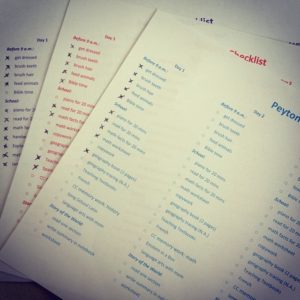As a student in high school or college, you may be asked to write a critical lens essay. You must understand this type of essay, enabling you to create one properly. This type of essay allows you to use your reading, analytical, and writing skills within a controlled writing environment. To come up with an excellent critical lens essay, you must have a good knowledge of the essay structure and be able to pay meticulous attention. This article discusses the critical lens essay extensively and provides you with all the knowledge you need to write one effectively.
Table of Contents
What is a critical lens essay?
A critical lens essay offers a critical perspective or opinion on a piece of material written in the form of a piece of art or a quote. This piece of writing requires the author or student to develop a literary work that analyzes a quote from other sources. It uses two literary sources, primarily books, to oppose or support the quote. As the writer, you don’t have to support the quote. It is crucial to understand that you’re not writing the average analytical or comparative essay.
In this case, your analytical skills are tested and measured through your final essay by adequately examining the values of the literary terminologies you use to deconstruct your argument, the appropriateness of these chosen literary devices, and their validity in the text. Of course, this means that the way you structure or outlay your critical lens essay determines if it turns out to be a stunning masterpiece or an unacceptable one. So, you have a bigger job at hand than interpreting the quote you’re working with.
The goals of this essay
A critical lens essay has just one goal: to explore several literary elements and themes when reading a famous literary work while using a contextual lens. This means that you must be able to defend the significant claim that you derive from the text or quote you are exploring. The way to do this appropriately is to link specific events or moments in the text that fit various lens categories and are a good match for your initial argument.
Critical lens essay format
The best critical lens essays follow the standard academic writing requirements for writing college essays. Unless it’s expressly stated otherwise, the essay writer is expected to follow an essay’s standard structure, which includes an introductory paragraph, the body of the text, and a conclusion. You must develop your critical analysis within the body section of a critical lens essay. At the same time, the introduction introduces the quote and hooks the readers so that they read to the end. Finally, the conclusion finalizes the ideas expressed within the body of the essay. Also, you must look out for certain factors such as word count and references.
The correct format for a critical lens essay requires that you underline and capitalize the book titles. Also, you should write with an objective tone, free from your personal opinions. Ensure to support your claims with clear and verifiable evidence. Finally, make sure to refrain from using personal pronouns so that your text can appear professional and academic. Rather than these pronouns, you may use words like the audience, readers, and people.
How to write critical lens essays
Critical lens essays can help demonstrate the depth of your critical thinking as a student and show the depth of your knowledge on that topic. This is why lecturers and teachers at universities, colleges, and high schools love it. While it’s possible, you don’t have to seek essay help from essay writing websites to write an impressive critical lens essay. Instead, these are the steps you should take:
- Choose an appealing quote that you will mention in your introduction alongside other information about its author. Include a few of the sentences that come before the quote so that the readers can have a contextual idea of the quote and what’s unique about it.
- Rewrite the quote in your words, add your explanation and turn it into a compelling thesis statement.
- Be clear in your thesis about whether you agree or disagree with the quote.
- Find two literary sources you will cite that help prove your opinion. Ensure that the references you add are relevant to the quote.
- Write the first paragraph of the body discussing your first literary evidence for or against the quote. Try to connect the thesis and the text from your source so that the example supports or opposes the quote.
- Follow the same process for other points in the body paragraphs.
- Write a conclusion about everything you discussed in the essay. Use the thesis and quote again to highlight the connection between your argument and the thesis.
Writing tips for a critical lens essay.
While there are many tips that you may follow for writing a critical lens essay, two of them stand out for us. They are:
- Portray the underlying themes that the quote denotes using two literary sources
You’re supposed to use quotations to explore and analyze literary works. Generally, the instructors give contrasting quotes, but there are specific cases where the students had to choose a second literary source from a list of selections that offered different comparisons and themes. In this case, it’s essential to firmly understand the initial quote so you can create a compelling argument.
- The last sentence in each paragraph should summarize the whole idea in that paragraph.
Draft your ideas in a different place, so you have a clear structure and outline for the paragraphs in your essay body. This helps you to structure your elements and themes logically. In doing this, ensure the essay has a smooth flow so it’s enjoyable for the reader and explore all supporting elements in the body concisely.
Conclusion
A critical lens essay is a different form of essay from the average analytical or comparative essay. It requires a lot of analytical thinking, even though your personal opinion is not required.
Featured Photo Photo by Ivan Samkov




